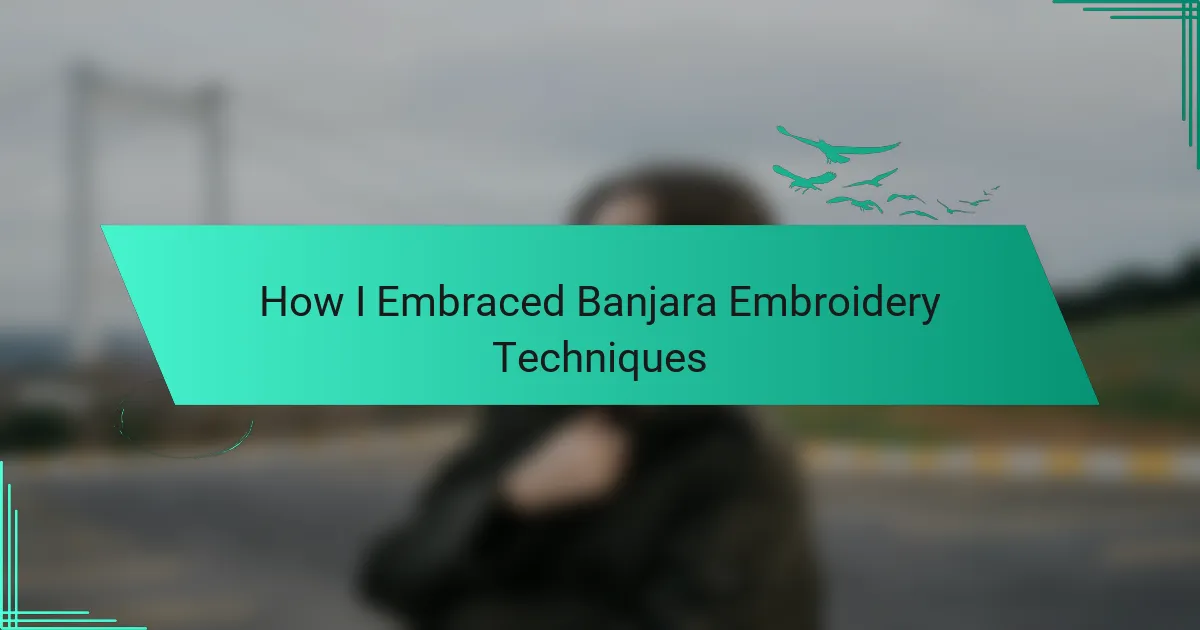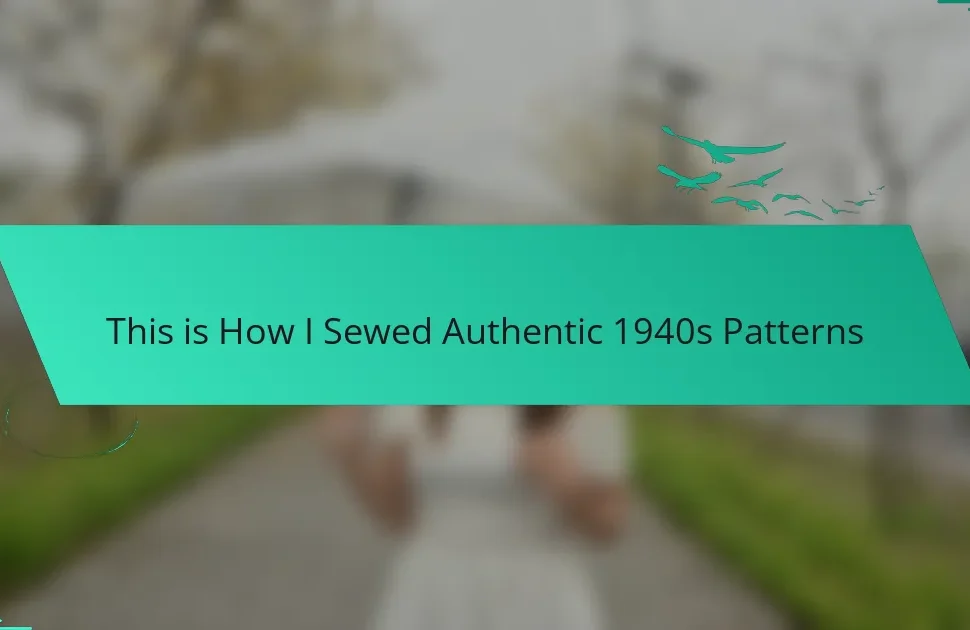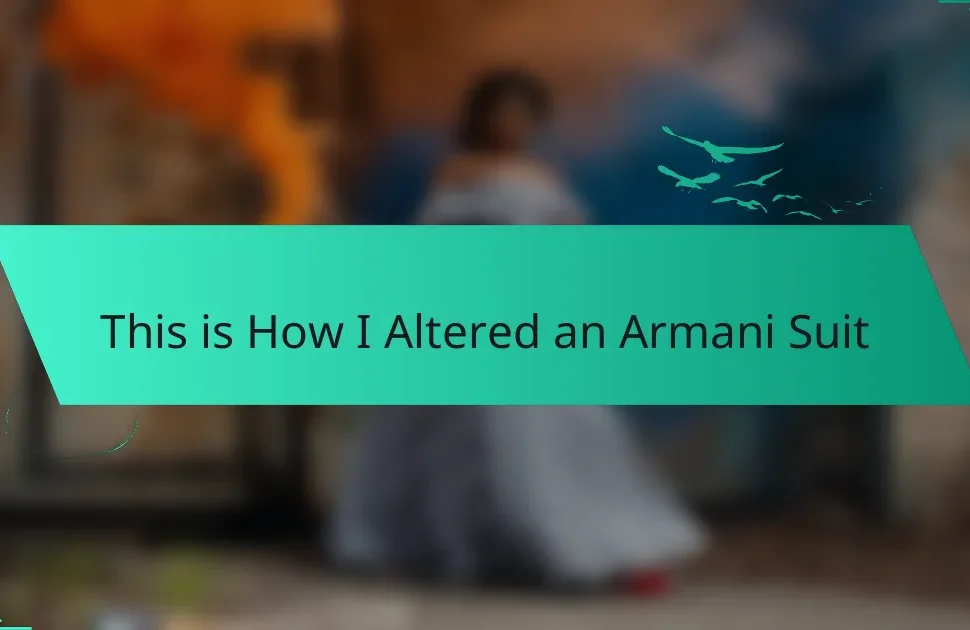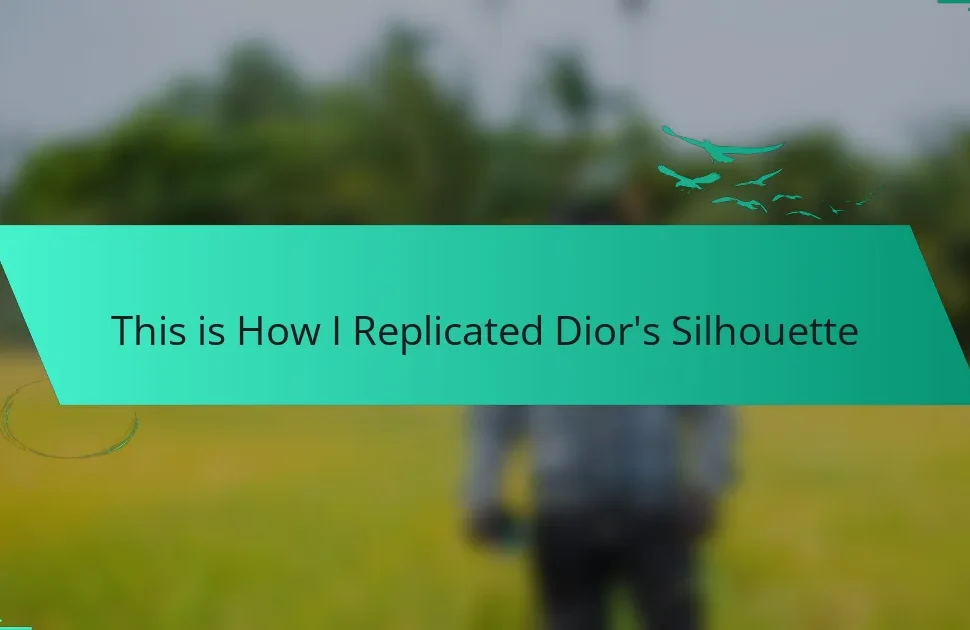Key takeaways
- Banjara embroidery is a vibrant art form that reflects the history and culture of the Banjara tribal community, characterized by rich colors, mirror work, and symbolic motifs.
- Engaging in DIY projects, like Banjara embroidery, fosters creativity, provides a therapeutic escape, and helps form a community with shared passions.
- Choosing the right materials, practicing stitching techniques, and incorporating unique elements like mirrors enhance the embroidery experience and personal expression.
- The journey in Banjara embroidery can be challenging but rewarding, allowing individuals to connect with heritage while adding their own narrative to the art form.
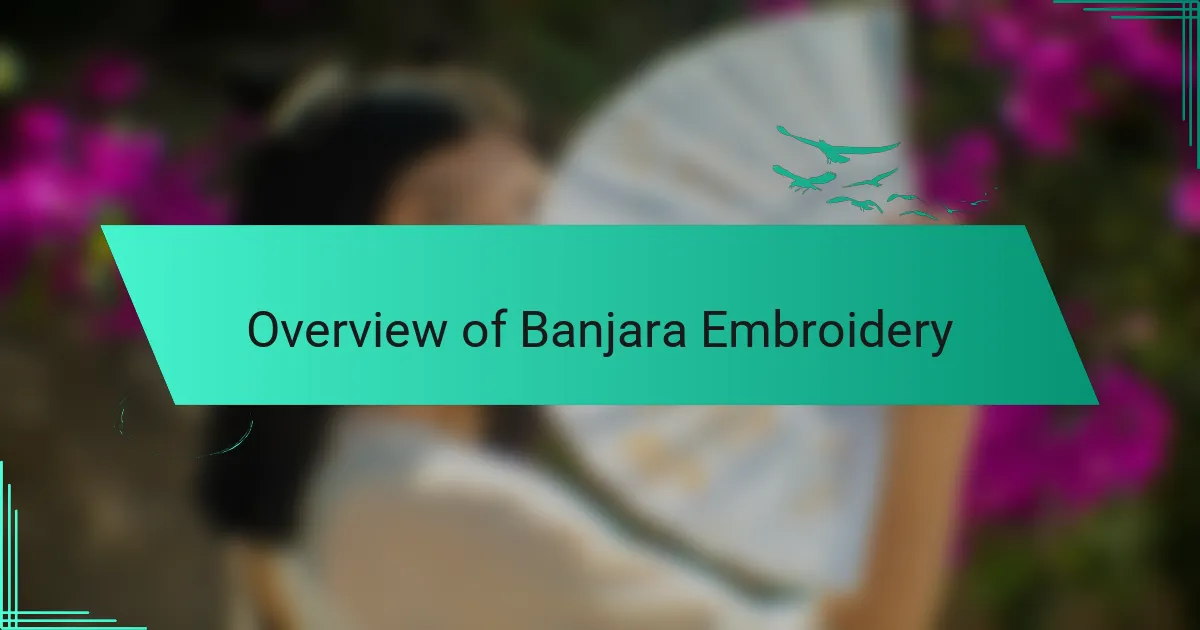
Overview of Banjara Embroidery
Banjara embroidery, rooted in the rich traditions of the Banjara tribal community of India, is a vibrant tapestry of colors and patterns. I first encountered this exquisite art during a local craft fair, and it captivated me instantly. It’s more than just needlework; it tells stories that reflect the culture, history, and the very spirit of the Banjara people.
The techniques used in Banjara embroidery are often handed down through generations, with each piece uniquely representing the artisan’s skills and creativity. When I began experimenting with these techniques, it felt like connecting with a rich heritage while expressing my personal style. Here’s a quick rundown of what makes Banjara embroidery so distinctive:
- Rich Colors: Utilizes bright hues, often from natural dyes, reflecting the vibrancy of tribal life.
- Mirror Work: Incorporates small mirrors that add depth and a unique sparkle to designs.
- Motifs: Features geometric patterns, animal shapes, and floral designs, each with symbolic meanings.
- Stitch Variations: A variety of stitches, including the ‘kantha’ and ‘soof’ techniques, showcase intricate detailing.
- Material Diversity: Typically uses cotton, silk, and even wool, enhancing both texture and visual appeal.
Exploring Banjara embroidery has not only been a fulfilling creative endeavor but has also deepened my appreciation for cultural craftsmanship.
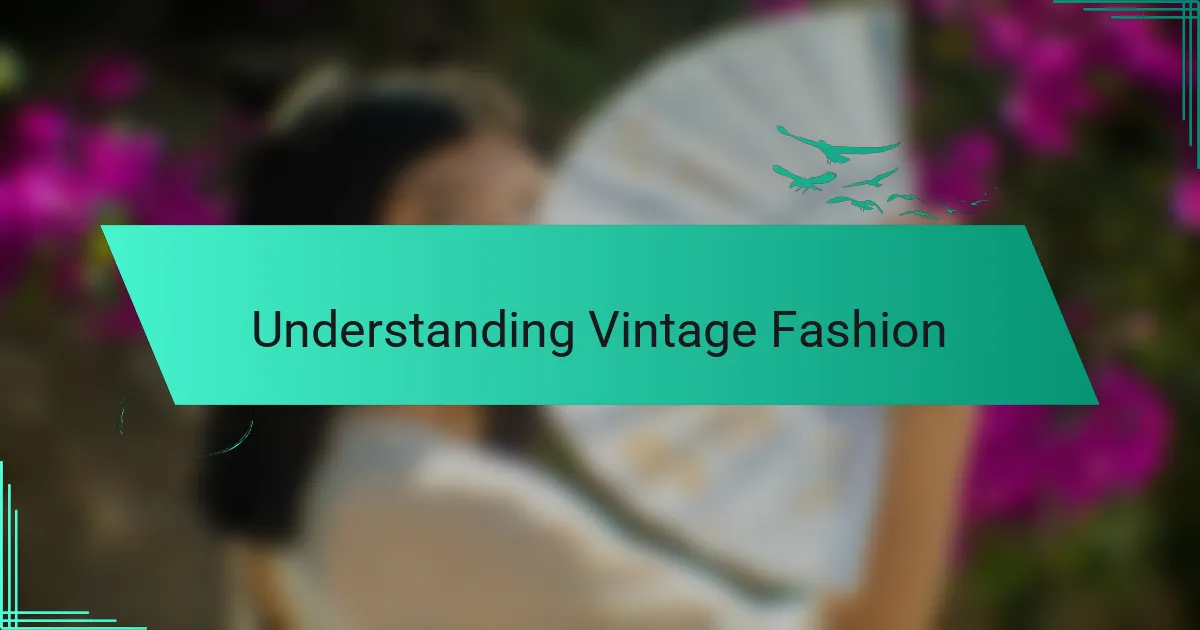
Understanding Vintage Fashion
Understanding vintage fashion is like stepping into a time capsule filled with the stories of the past. Each piece, whether it’s a 1920s flapper dress or a 70s bohemian top, carries its own history and speaks to a different era. I often find myself drawn to the unique craftsmanship of these vintage items, as they reflect a time when fashion was created with intention, skill, and heart.
For me, embracing vintage fashion means celebrating individuality and sustainability. I remember the thrill of discovering a beautifully embroidered jacket at a thrift store, knowing that wearing it means I’m not just following trends, but reviving a piece that once had its own life and impact. It’s about the emotions tied to each piece and how they connect us to those who wore them before.
Here’s a comparison table that highlights the distinctions in vintage fashion across different eras:
| Era | Key Characteristics |
|---|---|
| 1920s | Flapper dresses, bold beads, and Art Deco patterns. |
| 1960s | Bright colors, psychedelic prints, and mod styles. |
| 1970s | Flared jeans, boho vibes, and ethnic prints. |
| 1980s | Shoulder pads, vibrant colors, and experimental fashion. |

Benefits of DIY Techniques
Exploring DIY techniques can be incredibly rewarding for both the mind and spirit. I’ve found that engaging in hands-on projects allows me to express my creativity while also honing valuable skills. For instance, each stitch I make in Banjara embroidery feels like a conversation with my ancestors, bridging the past with my own artistic journey.
Beyond the creative outlet, DIY techniques can be a therapeutic escape from everyday stresses. I remember one afternoon, getting lost in the vibrant colors and intricate patterns helped me unwind after a long week. Isn’t it amazing how creating something with your own hands can turn a mundane day into a vibrant memory?
Additionally, embracing DIY techniques fosters a sense of community. Whether it’s attending workshops or sharing projects online, I’ve connected with others who share this passion. These interactions not only inspire new ideas but also cultivate friendships rooted in shared creativity. Who knew that a simple hobby could lead to forming such meaningful connections?
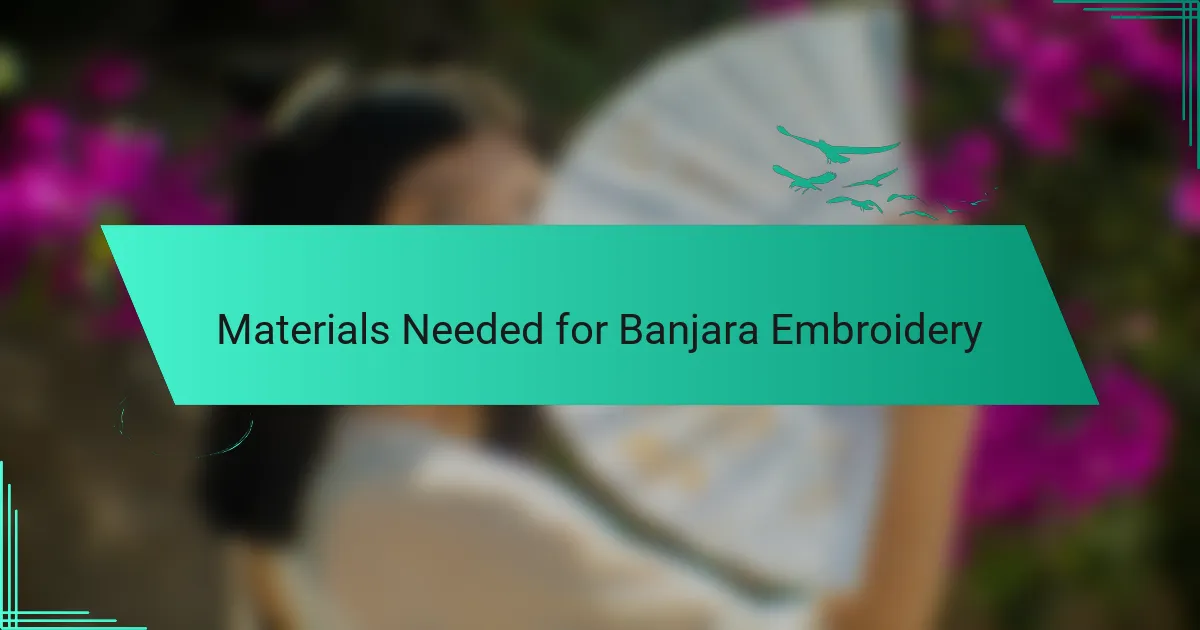
Materials Needed for Banjara Embroidery
When diving into Banjara embroidery, the right materials can enhance your experience significantly. You’ll need a sturdy base fabric, such as cotton or silk. I often choose lightweight cotton because it makes stitching easier and allows those vibrant colors to shine through beautifully. What’s your preference?
Don’t forget about the threads! Using bright, colored threads is essential, as they truly reflect the essence of Banjara art. I recall my first project; I was mesmerized by the variety of thread textures I discovered. Choosing a mix of cotton and silk threads not only adds dimension but also makes the embroidery pop. Are you ready to experiment with different thread types?
Mirror work is a hallmark of Banjara embroidery, so you’ll want to grab some small mirrors as well. I remember when I first incorporated mirrors into my design; the sparkles they added were nothing short of magical. It’s those little accents that transform an ordinary piece into something extraordinary. Have you considered how these mirrors can tell your story through your art?
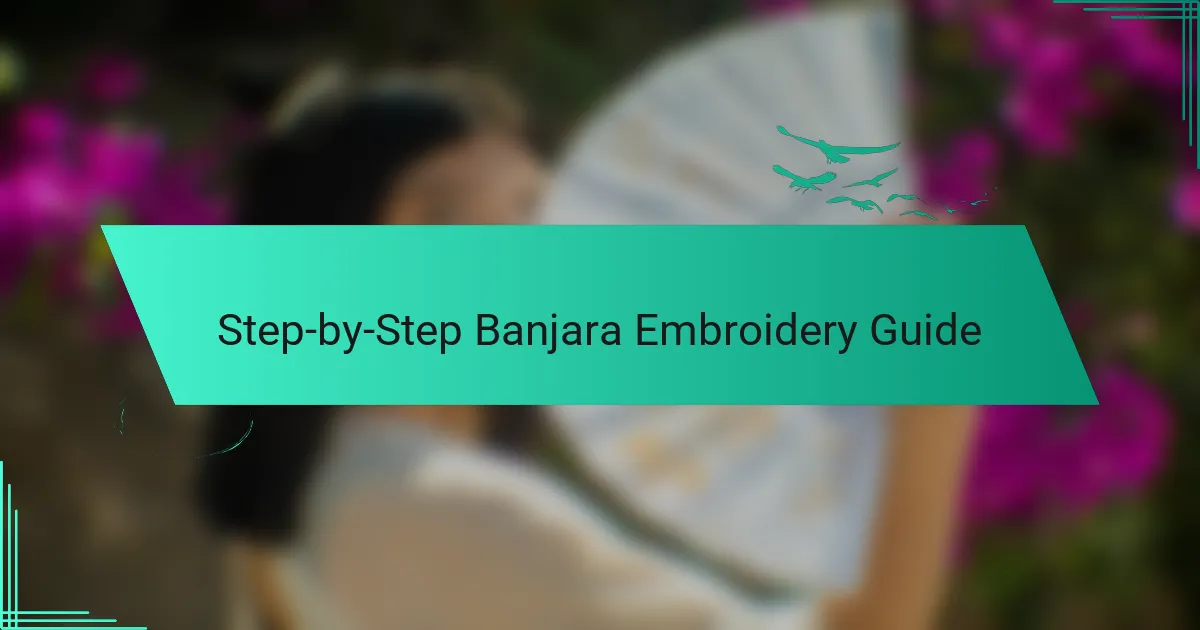
Step-by-Step Banjara Embroidery Guide
Banjara embroidery techniques often start with a simple setup. I remember laying out my materials, feeling a mix of excitement and nervousness. First, I would outline my chosen design on the fabric using a washable marker, ensuring it would guide my stitching without compromising the final look. Have you ever felt that thrill of anticipation as you prepare to create something beautiful?
Next came the stitching itself, where I employed the traditional ‘kantha’ and ‘soof’ techniques. I discovered that starting with small stitches not only helped me maintain control but also added an intricacy that showcased my growing skills. There’s something so satisfying about watching a pattern come to life, isn’t there? With each stitch, I felt like I was weaving my own story into the fabric.
Finally, I adored adding the mirror work. Carefully placing each small mirror took patience, but the transformation was worth it. The way they caught the light made my creation shimmer and gave it an enchanting quality. Reflecting on that experience, I realize it’s much like life—every detail, every choice we make, contributes to our own unique brilliance. How will your pieces of art reflect your journey?

Personal Journey in Banjara Embroidery
My journey into Banjara embroidery began quite unexpectedly. I stumbled upon a vibrant piece at a local fair, and its intricate patterns captured my heart. The moment I touched the fabric, I felt a deep connection to the history and culture embedded in every stitch.
As I dove deeper into the world of Banjara embroidery, I discovered how it reflects the nomadic lifestyle of the Banjara tribe, known for their rich heritage. Each motif tells a story, and I found joy in learning about their meanings. It felt like weaving together my own narrative with each embroidery project I undertook.
The process wasn’t always smooth. There were moments of frustration when the needle seemed to have a mind of its own, yet each challenge only made me appreciate the art form more. With each completed piece, a sense of pride emerged, knowing I was preserving a beautiful tradition while adding my own flair.
| Banjara Embroidery Techniques | My Experience |
|---|---|
| Motif Selection | Choosing motifs that resonated with my personal story |
| Color Usage | Experimenting with vibrant colors to express my emotions |
| Stitch Practice | Facing and overcoming initial challenges in mastering stitches |
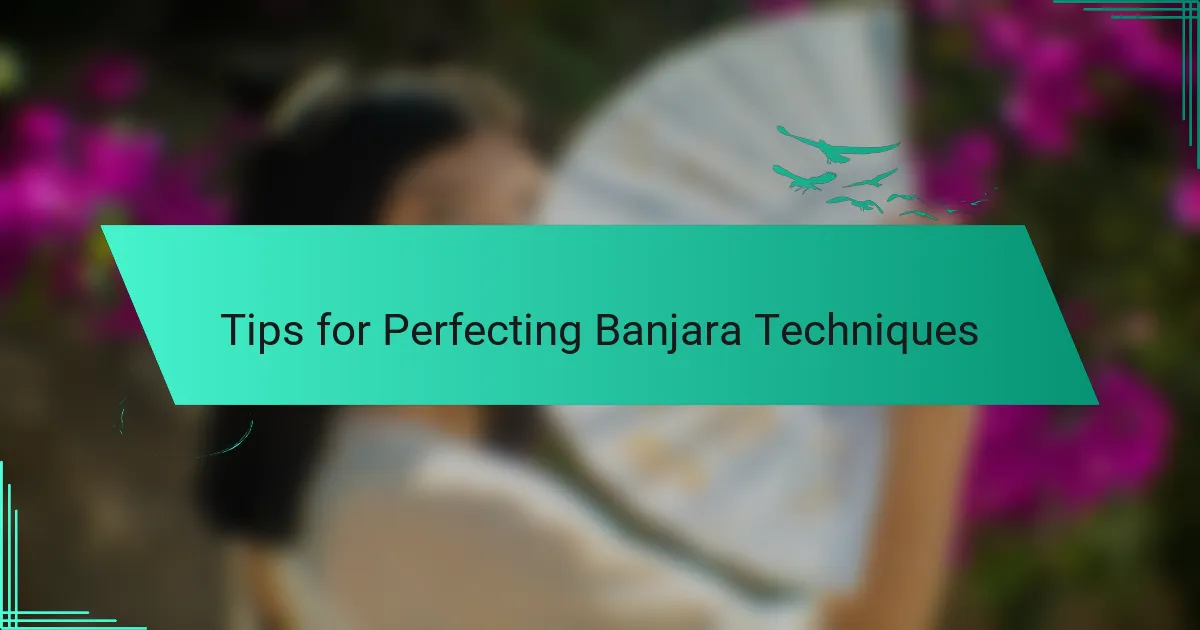
Tips for Perfecting Banjara Techniques
To perfect Banjara techniques, one of the best tips I can offer is to embrace experimentation with colors and stitches. When I first started, I was hesitant in choosing my color palette, but I quickly learned that mixing vibrant hues can elevate your design. Have you ever felt like a color brought your creation to life? I still remember the thrill of witnessing how a bright orange could make the deep indigo fabric sing.
Another key aspect is to practice the stitches regularly. I found that dedicating a little time each day helped me gain confidence. Initially, my stitches were uneven and wobbly, almost like my own doubts. But as I continued, I began to develop a rhythm that not only improved my technique but also transformed my mindset. Isn’t it incredible how practice can turn uncertainty into skill?
Finally, incorporating mirror work requires a touch of patience and precision. I recall the excitement of placing my first mirror, but it took a few tries before they were aligned just right. The way they reflected light felt magical once I perfected it. So, don’t rush. Relish the process. After all, each mirror you place contributes to a story that intertwines your journey with the rich heritage of the Banjara people. What stories will your mirrors tell?
